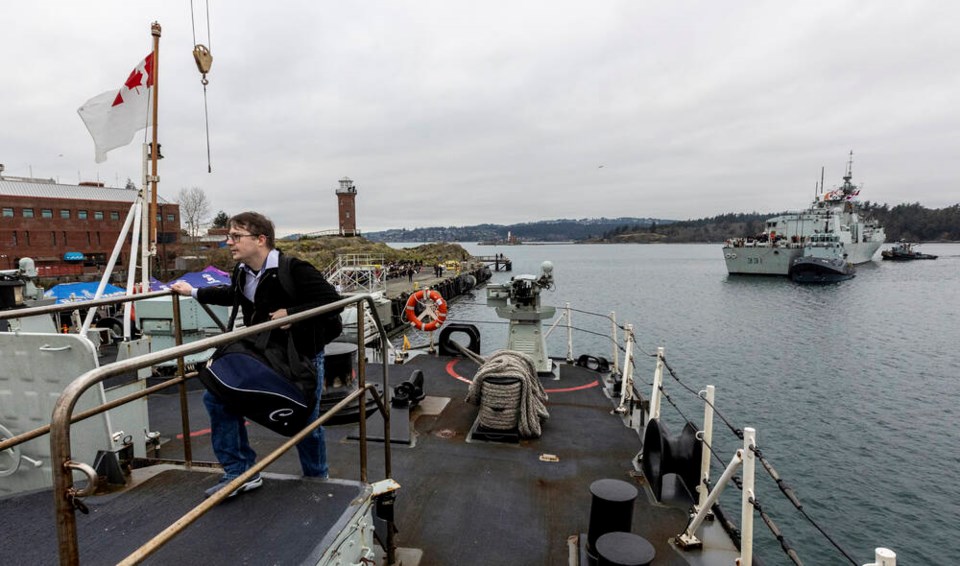A commentary by a Victoria resident.
The commander of the Royal Canadian Navy has released a new video warning the force is in a “critical state,” with ships that are beyond their life cycle and a severe shortage of sailors to operate them.
The navy now relies on its 12 Halifax class frigates, which are approaching the end of their 30-year operational life but must stay in service for another 15 years because their replacements are behind schedule and over budget.
The up to 15 new frigates will replace the existing ships beginning in the mid to late 2020s. However, the number may be less, depending on the allocated funding.
The vessels will be somewhat larger than the existing Halifax class frigates, and presumably provide a wide-area air defence capability, anti-submarine as well as anti-ship warfare capability. The design is based on the Type 26 British frigate, and final design is being completed.
Both the total number of ships and their capability will be dependent on the budget that is allocated to the project.
By 2021, the Parliamentary Budget Officer estimated the cost for the program of 15 frigates as $77.3 billion, rising to $79.7 billion if there is a one-year delay in the start of construction and $82.1 billion if there is a two-year delay. The cost is roughly working out to be more than $5 billion per ship.
As a comparison, look at the U.S. navy’s new frigates being procured. In 2020, the navy awarded Fincantieri Marinette Marine a contract to build the navy’s new surface combatant, a guided missile frigate.
The contract guarantees that Fincantieri will build the lead ship (the first ship designed for a class) and gives the navy options to build as many as nine additional ships.
The U.S. navy estimates that the 10 ships would cost $8.7 billion in 2020 dollars, an average of $870 million per ship, or about Canadian $1.2 billion per ship. For Canada, a similar state-of-the-art frigate will cost $5 billion, or five times more.
There are various reasons for this huge cost difference. First, for the Canadian frigate, the British Type 26 was selected, and this design is being modified to meet Canadian requirements, or Canadianized, to supposedly improve efficiency.
This obviously adds to cost. Then there is the limited production of Canadian shipyards, and periods when they are idle since Canadian naval shipbuilding needs are limited.
Hence, it is more expensive to build ships in Canadian yards. Shipyards get government financial assistance, yet provincial governments purchase their ferries from offshore yards because it is cheaper.
Perhaps the solution would be for the government to purchase the U.S. navy frigates from U.S. shipyards, and have the ongoing maintenance carried by the Canadian shipyards, at huge savings.



